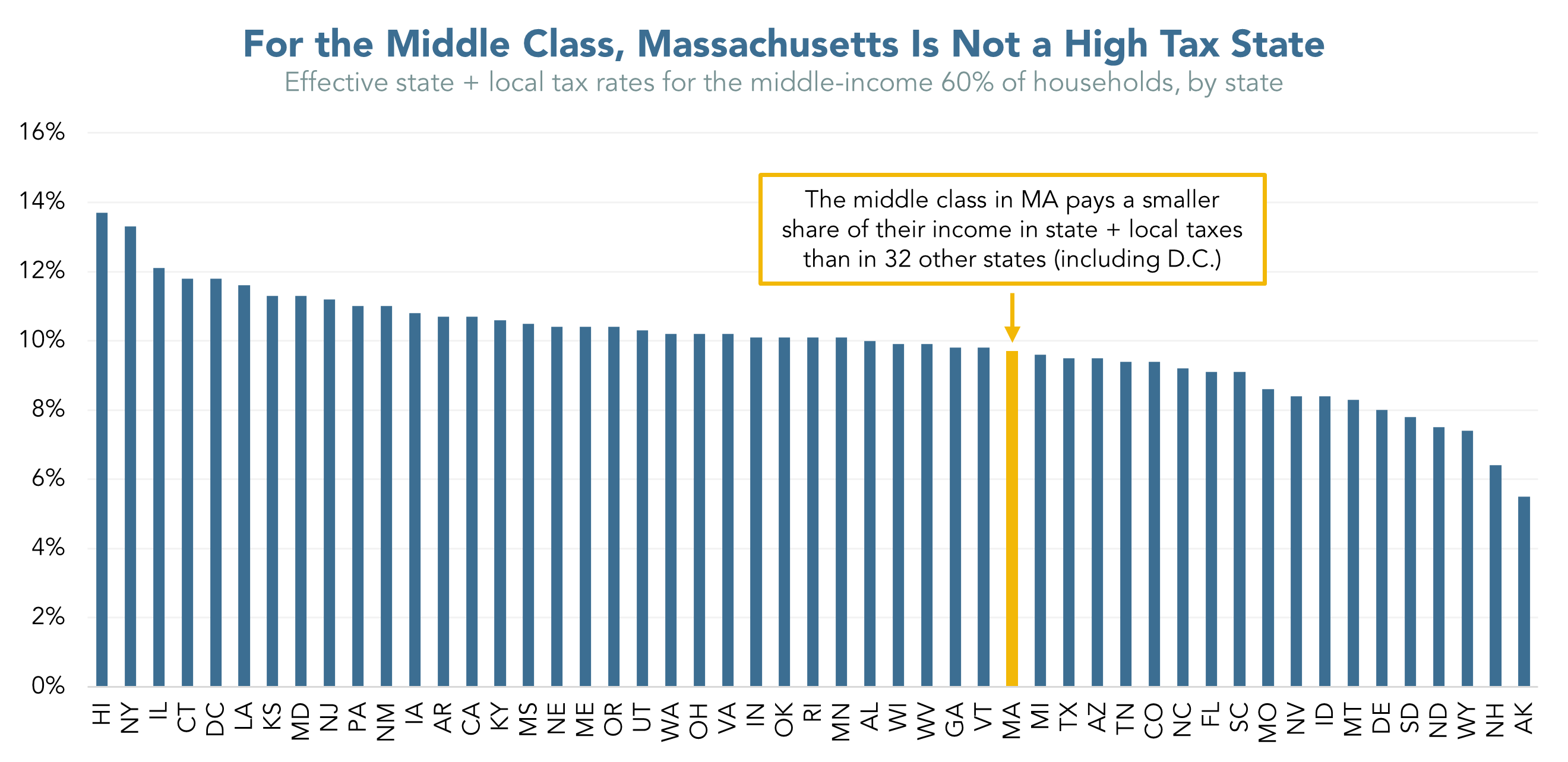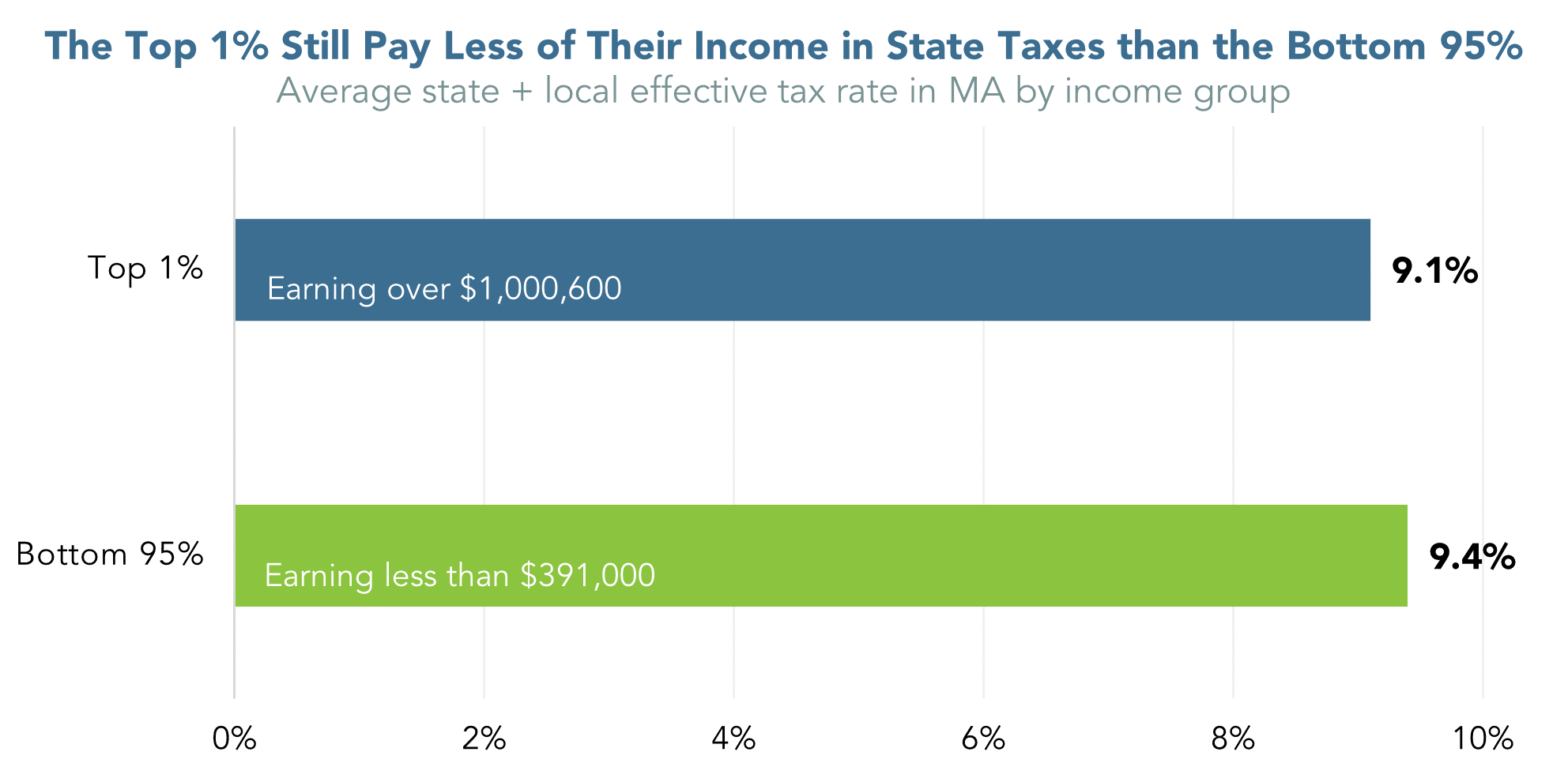A new 50-state analysis from the Institute on Taxation and Economic Policy (ITEP) finds that Massachusetts’ recently adopted millionaire tax makes Massachusetts’ state and local tax system much more equitable. Even under current law, however, those with incomes over $1 million still will pay a smaller share of their income in state and local taxes than the bottom 95 percent of households.
The ITEP update of its widely referenced Who Pays? report (7th Edition) shows that Massachusetts is not an outlier in terms of its overall state and local tax level for very high-income households. The top 1 percent of households in nine other states, as well as Washington D.C., pay a larger share of their income in taxes than the top 1 percent in Massachusetts does. These states include neighbors such as Vermont, Maine, and New York, as well as other nearby states such as New Jersey and Maryland.
Adoption by voters of the millionaire surtax (in November 2022) not only significantly reduced the unfairness of Massachusetts’ overall state and local tax system, it also improved our tax-fairness standing relative to other states. As ITEP’s analysis shows (see Appendix D of the ITEP report), without the changes made to Massachusetts’ tax laws in the last two years, 16 other states (including D.C.) would have tax systems more equitable than Massachusetts’. With the recent tax changes in place, however, only 7 states (including D.C.) have tax systems that are fairer than Massachusetts’. The ITEP analysis shows that most of that increase in tax progressivity is the result of the millionaire surtax.
ITEP’s update of its Who Pays? report also isolates and examines separately the impacts of Massachusetts’ 2023 tax package. Despite some provisions that cut taxes almost exclusively for the state’s highest-income and wealthiest households, taken as a whole, the 2023 tax package modestly improved tax fairness in Massachusetts. The package increased several tax credits and deductions that benefit many low- and middle-income households. While these low- and middle-income households typically will receive smaller tax reductions in absolute dollar terms from these changes than high-income households will, for low- and middle-income households, the package’s increased tax breaks represent a larger share of their household income, thus improving overall tax fairness in Massachusetts.
ITEP’s analysis also reveals that for most households, especially those with low- or middle-incomes, Massachusetts is a relatively low-tax state. The middle 60 percent of households in Massachusetts – the broad middle class – pay a lower average share of their income in state and local taxes than the middle class in 32 other states do (including Washington D.C.). Notably, the middle class pays a smaller share of income in taxes in Massachusetts than in many supposedly “low-tax” states such as Georgia, Indiana, Mississippi, Kentucky, and West Virginia. Likewise, for households with the lowest 40 percent of incomes, those in Massachusetts pay a lower share of income in taxes than is the case in 37 other states (including Washington, D.C.), notably including supposedly “low-tax” states such as Texas and Florida.

However, even with these major changes to our tax laws which improve tax fairness, Massachusetts’ overall tax system remains upside down. On average, the highest-income 1 percent of households in Massachusetts still pay a smaller share of their income in state and local taxes (9.1 percent) than households in the bottom 95 percent do (9.4 percent of their income).

The experience of other states shows that it does not have to be this way. Seven states have right-side up tax systems, ones that collect a smaller share of household income from low- and middle-income households than from high-income households. This group includes Maine, Vermont, and New York – states that neighbor Massachusetts – as well as New Jersey, D.C., Minnesota, and California. These seven states generally apply higher tax rates than Massachusetts does to extremely high incomes. They also have graduated rate structures that apply relatively high tax rates to several high-income brackets. Typically, these states also provide more generous, refundable tax credits to low-income households.
Massachusetts has many options for advancing progressive tax policy. With the right policies in place, Massachusetts could flip our tax system right-side up, so that the highest-income households pay a larger share of their income in state and local taxes than the rest of us do.





